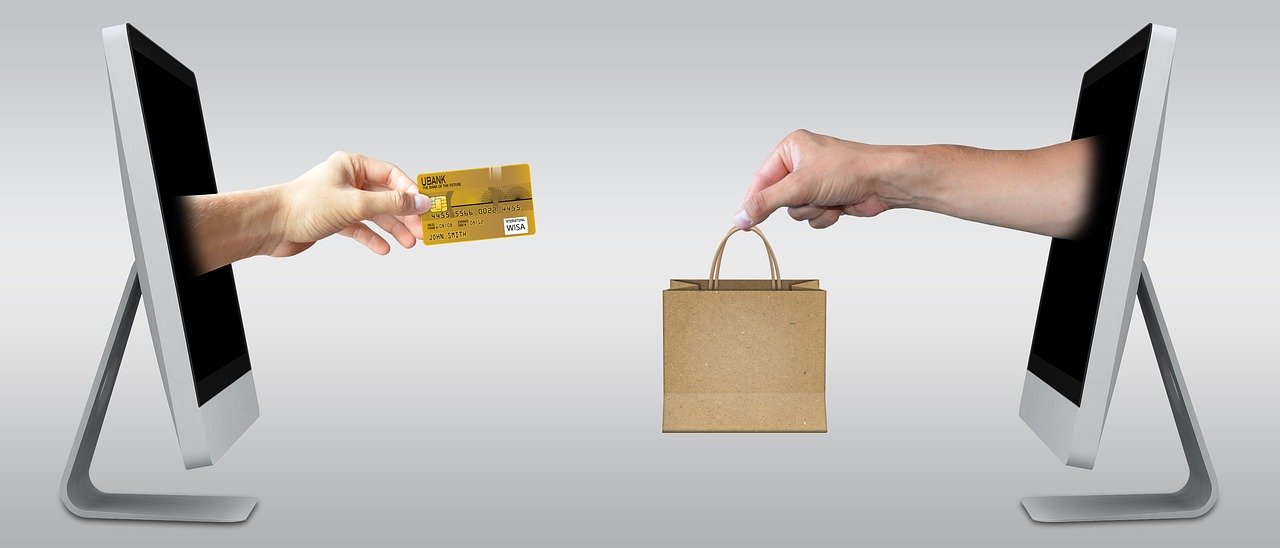Have you ever walked through seemingly endless aisles in a store just to end up not finding what you were looking for?
You’re not alone.
Just last week, I found myself in a bookstore with great company, helping her look for a book by famous author Albert Espinosa.
After an hour or two of browsing by ourselves, we eventually gave up and asked an employee for help.
The staff looked through their system and finally told us the specific book we were looking for was only available online.
That’s electronic commerce in action.
One of its many benefits is having a bigger inventory than in a standard brick and mortar store, and 24/7 service? Score! The sale stayed in the bookstore as we ended up ordering the book from them and having it in our hands in very little time.
E-commerce is simply the sale and purchase of products or services through an electronic medium, specifically via the internet. As the name implies, e-commerce involves business transactions that are done electronically, outside of a traditional brick and mortar shop.
Already an economy in itself, e-commerce just keeps growing and growing. CIO.com predicts in 2016 e-commerce sales in the United States alone should exceed 550 billion dollars–that is with a B.
Can your business leverage e-commerce?
The folks at CIO shared with us the top 8 industries that are expected to make an e-commerce boom with increased sales and opportunities for 2016. Does your business belong to one of them?
- Activewear
Fitness meets fashion. For the activewear market there is no other way but forwards and up. With the recent trend of wearing comfortable clothes beyond the usual, people are not only wearing activewear on the way to and from the gym, but they are working out, going out, and hanging out in activewear. And they have never looked so good while doing it. - Baby Products
The online baby product market changed the rules and it learned to run before it could crawl. While it may seem that baby products have stayed more or less the same for a long time, the few that actually offer new benefits and features are taking the industry by storm. Back in 2011, the baby care market was worth at around $44.7 billion, and the growth was slow but steady, but from 2016 to 2017 it is expected to grow by almost 50% to $66.8 billion, according to Statista. - Educational Products
As we’re shifting from a post-industrial to a knowledge economy, we are relying more on intellectual capital. Digital educational products are one of the biggest markets right now. Once you have created your content, the return on investment is almost unbeatable. - Furniture and Home Decor
According to IBIS world, the rise in houses built and consumer confidence has caused the $83 billion industry of home furniture and bedding to experience a big growth, and we can expect it to continue at least over the next five years. - Handmade Products and Crafts
With tools and websites like Pinterest and Etsy, as well as every design blog out there, inspiration is as endless as the choices and variety. - Pet Care
According to the American Pet Products Association, the pet industry took in approximately $60.3 billion in the United States during 2015, marking an increase of over $2 billion from the previous year. And pet-related sales are expected to keep growing as we continue to spend more on our pets. - Specialty Foods
This is a big one. The specialty foods market is ripe with opportunities for growth. In this knowledge era we like to know where our food comes from. As consumers, we are always looking out for the healthiest options. Companies that cater to unique tastes such as organic, vegan, and gluten-free products, among many others, will be the big winners this year.As Daniel Burstein, Director of Editorial Content at MarketingSherpa, says: “E-commerce sites that can sell customers not just food, but connect with them by sharing the story behind how that food was grown or made, will seriously shake up the staid grocery industry.” - Travel
According to the United Nations World Tourism Organization, there were more than 1.1 billion international tourists in 2014. The UNWTO predicts a yearly growth between 3% and 4%. And SDL.com conducted research which revealed that “nearly 80% of modern consumers book their travel online.”
There are four major categories of e-commerce
- B2B (Business-to-Business)
Companies conducting transactions with each other. Producers and traditional commerce wholesalers usually operate using this type of electronic commerce. Big name websites joining this model are already boosting their success–Amazon Business is a great example. - B2C (Business-to-Consumer)
Businesses that sell online merchandise to individual consumers are part of the business-to-consumer model. The North American e-commerce market has been in constant development. B2C sales in the North American region account for 34.9% of global electronic sales. Companies are taking advantage of this by creating electronic storefronts after discovering the larger volumes they could sell through B2C models. Amazon, Apple, and Walmart are already part of this model. - C2B (Consumer-to-Business)
The reverse of B2C: now customers bring value to the company, but both consumers and businesses benefit from this model. As Business News Daily puts it: “Businesses profit from the willingness of consumers to name their own price, contribute data or marketing to the company, while consumers profit from flexibility, direct payment, or free or reduced-price products and services.” The idea is that the customer supplies a product or service that the business can use to then complete a transaction or gain a competitive advantage. - C2C (Consumer-to-Consumer)
This e-commerce model involves transactions conducted from consumer to consumer. Ebay and Etsy are among the websites that are made around this model.
The rise of e-commerce is undeniable
In today’s electronic economy, the rise of e-commerce is undeniable. No brick and mortar shop will generate traffic on the internet just by itself, even if you have a small local shop, your clients are looking for your business online. The first step is to have a reliable website that your visitors can trust; after all they may be “betting” their money on you.
E-commerce is grounded on confidence. A vendor that fails to establish a trusting relationship with their customers is already doomed. If a potential customer sees something that doesn’t seem right on a website, they may go the next result in their search. Nobody wants to bet on the wrong horse.
Don’t forget, now that mobile browsing is unstoppable, a responsive website design is a must. According to Entrepeneur.com, 35% of all e-commerce transactions were done through a mobile device. That is why 8 Signal offers website design aimed to provide an optimal viewing and interaction experience, effectively taking the stress out of trying to figure out your website by yourself.
Reel ‘em and keep ‘em
Once you have a website, you want it to become an actual destination, a place where visitors come for specific reasons, read what you have to say, and ideally buy your product or hire your services.
Attract your customers and give them reasons to keep coming back to you.
Great content gives you the opportunity to share as much information about your products as possible and stay in touch with your customers (not to mention the boost in search engine optimization). As content all over the web becomes more and more interactive, you need an engaging site where customers want to shop again and again.
Have a powerful brand strategy
The internet itself has turned people into savvy shoppers, shifting the power from businesses to consumers. This is a double-edged sword since it has also caused brand loyalty to decline, according to Inc.com. It is now more important than ever to have a great customer base and build a strong brand name.
Do you remember the last time you had a cold? You may have asked someone to pass you a Kleenex. But why? Runny nose aside, that’s the result of a powerful brand name–Kleenex is not the product, it’s the brand name.
You can achieve the same with an effective brand strategy. Your strategy will help define how your customers see your business and what you have to offer. You’ll create a name for yourself that customers recognize easily. 5 ways of getting that brand recognition your business deserves are:
- Determine a unique selling proposition that differentiates you from your competitors.
- Stand out because of your product or service quality. Quality ensures returning customers.
- Personalize the customer experience. From craftsmanship to packaging, every fine detail is just as important as the actual product.
- Give back. Brands position themselves by giving back to their customers. From a thank you note to an exclusive discount for a future purchase, these are techniques to keep a customer.
- Don’t be afraid to change the rules. If what you offer is truly unique, try to focus your marketing efforts around that.
People will like you!
Prepare yourself for success. E-commerce may stand for Electronic Commerce but you need to build not just your website, but your whole business to be able to handle it, from the website to the shipping department, your order processes, and everything in between.
Of course this doesn’t happen overnight so you may want to consider working by stages. Plan to reach imposing heights but implement what you can handle. Remember, growth comes incrementally.
Remarketing is an Essential Part of E-commerce
Remarketing, and sending shopping-cart-abandoners emails with special offers and discounts are must-have weapons for your marketing arsenal. According to research conducted by vwo.com, “more than 55% of online shoppers are open to the idea of purchasing a product they abandoned in their cart if it is offered again at a discounted price.”
To recap, e-commerce is the buying and selling of products and services by businesses and consumers over the internet. E-commerce allows you to establish a greater market presence as it enhances your existing market position by providing an efficient distribution channel for your products or services.
When it gets down to it, what you really want to know is how you can make it into this billion dollar market. Getting the e-commerce part of your business to take off is not something that happens overnight, but when implemented properly, e-commerce can prove to be a faster, cheaper, and more convenient way of selling (and purchasing) goods and services.
E-commerce is built around the idea of using the internet to make and save money. Are you thinking about selling your products or services online? 8 Signal is your marketing services department without the overhead. Feel free to visit our website, or pick up the phone and call us at (915) 585-1919.





